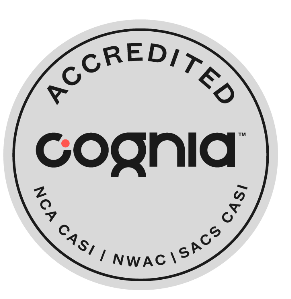POLICY NUMBER:
500.43
ADOPTED:
8.17.2021
Board Policy
- The Board of Education is committed to the screening of students within their jurisdiction for visual difficulties or impairments in accordance with applicable state law. (See, Utah Code §53G-9-404, Public education vision screening and R384-201, School-Based Vision Screening for Students in Public Schools).
- Students with vision problems are affected academically, socially, and psychologically. Therefore, the Board directs the Administration to provide for vision testing throughout the District.
- The Board authorizes the Superintendent and District Administration to develop administrative regulations consistent with this policy, subject to review and approval by the Board.
ADMINISTRATIVE REGULATION:
500.43-1
APPROVED:
8.17.2021
Defintions - 500.43-1
For purposes of this policy, the following definitions apply:
1. “Qualifying child” means a child who: (i) attends a District school; (ii) is at least three years old; and (iii) is not yet 16 years old.
2. “Tier one (1) vision screening” means a lower-level evaluation of an individual’s vision, as determined by Utah Department of Health rule.
3. “Tier two (2) vision screening” means an individual, higher-level evaluation of an individual’s vision, as determined by Utah Department of Health rule
ADMINISTRATIVE REGULATION:
500.43-2
APPROVED:
8.17.2021
Vision Screening Program - 500.43-2
- The Director of Responsive Services or designee shall be responsible for the development, implementation, and review of the District Vision Screening Program.
- The purpose of the school-based vision screening objectives of the District Vision Screening program are to detect vision difficulties in students so that follow-up for potential concerns may be done by the student’s parent or legal guardian (See, R384-201-3). Vision screening is not a substitute for a complete eye exam and vision evaluation by an eye care professional.
- A school nurse, under the direction of the Responsive Services Director or designee, shall supervise Tier one vision screening clinics as well as provide referral and follow-up services.
ADMINISTRATIVE REGULATION:
500.43-3
APPROVED:
8.17.2021
Screenings; Tier 1 and Tier 2 Vision Screening - 500.43-3
Screenings
- Screenings are to be performed following criteria developed by Utah Department of Health.
- Screenings are to be done using material and procedures approved by Utah Department of Health.
- School vision screening is comprised of Tier 1 and Tier 2 screening.
- If the parent/legal guardian of a qualifying child requests that the qualifying child not participate in a Tier 1 or Tier 2 vision screening, the District may not require the qualifying child to receive the Tier 1 or Tier 2 vision screening.
Tier 1 Vision Screening:
- Tier 1 vision screening shall be conducted for
- Students in pre-kindergarten, kindergarten, first, third, fifth, seventh or eighth, and ninth or tenth grades.
- Students referred by parents/guardians, school personnel, or self to rule out vision as an obstacle to learning.
- Students with an individualized education plan (IEP) who have not been screened within the last three (3) years.
- Students who are currently receiving services from Utah School for the Deaf and Blind or the District vision specialist has a diagnosed significant visual impairment will be exempt from screening.
- Tier 1 vision screeners may be school nurses or trained volunteers who have completed UDOH training for Tier 1 vision screening.
Tier 2 Vision Screening:
- Mandatory Tier 2 vision screening shall be conducted for:
- Students who fail to achieve benchmark status on the benchmark reading assessment in grades 1-3:
- Teachers must complete the vision symptoms questionnaire within 45 calendar days of the administration of the assessment and submit to the school nurse.
- Teachers need only complete the vision symptoms questionnaire once per school year.
- School nurses or other approved Tier 2 vision screeners shall use the vision symptoms questionnaire to perform a secondary assessment and/or refer to an eye care professional.
- Students who are being referred to special education or reevaluation for a suspected disability affected by vision difficulties:
- Teachers must complete the vision symptoms questionnaire and submit to the school nurse.
- School nurses or other approved Tier 2 vision screeners shall use the vision symptoms questionnaire to perform a secondary assessment and/or refer to an eye care professional.
- Students who fail to achieve benchmark status on the benchmark reading assessment in grades 1-3:
- Optional Tier 2 vision screening may be conducted for
- Students who are being referred by parent or legal guardian for vision concern.
- Parent or legal guardian should complete the vision symptoms questionnaire and submit to the school nurse.
- School nurses or other approved Tier 2 vision screeners shall use the vision symptoms questionnaire to perform a secondary assessment and/or refer to an eye care professional.
- Students who are being referred by parent or legal guardian for vision concern.
- Students failing a Tier 1 screening who have been referred to an eye care professional are not required to complete a Tier 2 screening.
- Tier 2 vision screeners may only be school nurses.
Required Screening for Students with an Individualized Education Plan
- Required screening for students identified with an IEP in the District are as follows:
- Vision issues have to be ruled out as an obstacle to learning before Specific Learning Disability can be used as eligibility criteria and;
- Every three years, a student must be reevaluated for eligibility for special education in all areas of suspected disability, including vision (See, R384-201-5).:
ADMINISTRATIVE REGULATION:
500.43-4
APPROVED:
10.6.2020
Reporting - 500.43-4
- All vision screening results including referrals and follow-up results shall be recorded on the student’s electronic record.
- The parent(s) or legal guardian(s) of students who fail to pass the initial screening examination will be notified in writing within 30 days from a vision screening of any impairment disclosed by the vision screening recommending further evaluation by an eye care professional.
- Required state reports will be submitted by the Director of Responsive Services or designee annually to the Utah Department of Health
ADMINISTRATIVE REGULATION:
500.43-5
APPROVED:
10.6.2020
Vision Screening Volunteers - 500.43-5
- Annual training for volunteers who assist with Tier 1 vision screening clinic shall be provided by a school nurse in compliance with Utah Department of Health materials; or through successful completion of the training module developed by Utah Department of Health.
- In accordance with Department of Health rule, a person may be excluded from volunteering at a Tier 1 vision screening clinic if the person has a conflict of interest, including if the person could profit financially from volunteering.
- A volunteer who assists with Tier 1 vision screening clinic may not market, advertise, or promote a business in connection with assisting at the Tier 1 vision screening clinic.
- A volunteer who assists with a Tier 1 vision screening clinic is not liable for damages that result from an act or omission related to the Tier 1 vision screening clinic, if the act or omission is not willful or grossly negligent.
Exhibits
Forms
None
Document History
Revised – 5.22.2018. Policy—500.43—Vision Screening required an update to add language regarding vision screening for students with individualized education plans (IEPs).
Adopted – 11.13.2012.
This online presentation is an electronic representation of the Canyons School District’s currently adopted policy manual. It does not reflect updating activities in progress. The official, authoritative manual is available for inspection in the office of the Superintendent located at 9361 South 300 East Sandy, UT 84070.


